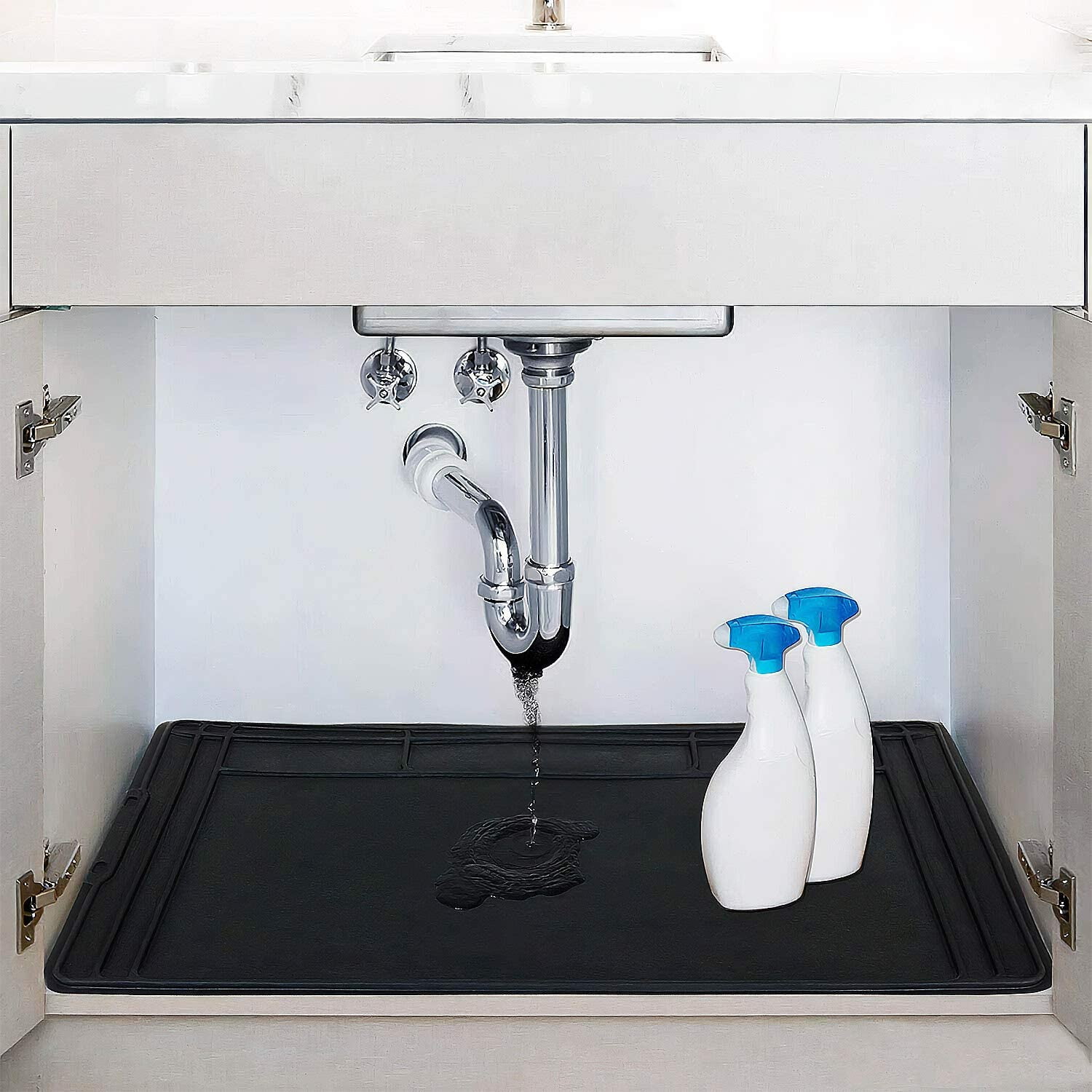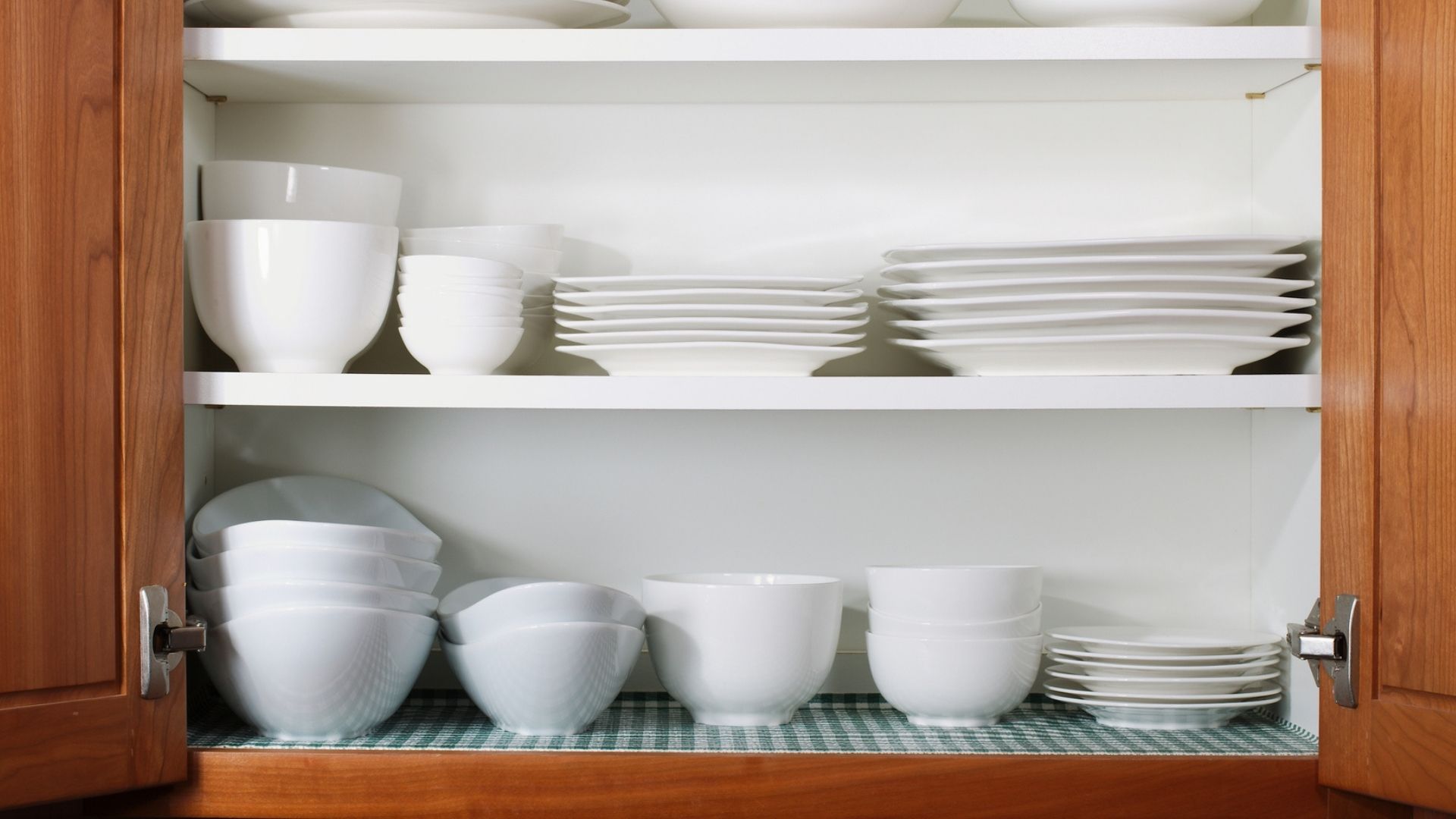Benefits of Kitchen Cabinet Plastic Liners

Kitchen cabinet plastic liners are a simple yet effective way to protect your cabinets and make cleaning easier. They are a thin, durable layer of plastic that is placed on the bottom of your cabinets, offering a barrier between your belongings and the cabinet surfaces. These liners are particularly beneficial in kitchens, where spills and messes are common.
Protection from Spills, Stains, and Moisture
Plastic liners offer a layer of protection against spills, stains, and moisture, preventing damage to the cabinet surfaces.
- Spills: When you accidentally drop a jar of sauce or spill a cup of coffee, the plastic liner prevents the liquid from seeping into the cabinet wood. This can save you the hassle of cleaning up spills and potentially prevent damage to the cabinet’s finish.
- Stains: Spilled food, especially oily substances, can leave permanent stains on cabinet surfaces. Plastic liners act as a barrier, preventing the stains from reaching the wood.
- Moisture: Moisture from damp items like sponges or cleaning cloths can cause warping or damage to the cabinet wood over time. Plastic liners create a barrier against moisture, protecting your cabinets from this type of damage.
Easy Cleaning and Maintenance
Plastic liners simplify cleaning and maintenance, making it easier to keep your kitchen cabinets looking their best.
- Quick Clean-up: Spills and messes can be easily wiped away from the plastic liner surface. You can simply remove the liner, wipe it clean, and replace it. This is much easier than cleaning the entire cabinet surface.
- Preventative Cleaning: By preventing spills and stains from reaching the cabinet surface, plastic liners help to maintain the overall appearance of your cabinets. They can help to keep your cabinets looking new for longer.
- Long-term Protection: Plastic liners can help to protect your cabinets from scratches and abrasions caused by storing heavy items or utensils. This can help to preserve the original finish and extend the lifespan of your cabinets.
Durability and Longevity of Plastic Liners
The durability and longevity of plastic liners vary depending on the type of material used.
- Standard Plastic Liners: These are generally made from thin, flexible polyethylene. They are affordable and readily available but may tear or rip with rough handling. They are suitable for light-duty use and may need replacement more frequently.
- Heavy-Duty Plastic Liners: These liners are made from thicker, more durable materials like polypropylene or PVC. They are more resistant to tears and rips, making them suitable for heavier items and more frequent use. They are also more resistant to moisture and chemicals, offering longer-lasting protection.
- Waterproof Liners: These liners are designed specifically for areas prone to moisture, such as under sinks or in pantries. They are often made from a waterproof material like vinyl or EVA foam, offering excellent protection against spills and leaks. They can also be easily wiped clean and are typically more durable than standard plastic liners.
Types of Kitchen Cabinet Plastic Liners

Kitchen cabinet plastic liners come in a variety of materials, each offering unique benefits and drawbacks. The choice of material depends on factors like durability, water resistance, and aesthetic appeal.
Types of Materials
- Vinyl: Vinyl liners are a popular choice due to their affordability and versatility. They are typically made from polyvinyl chloride (PVC), a synthetic polymer known for its durability and water resistance. Vinyl liners are available in various colors and patterns, making them aesthetically appealing. They are easy to clean and maintain, but they may not be as durable as other materials, and they can be prone to tearing.
- Polyethylene: Polyethylene (PE) is a lightweight and flexible material often used for kitchen cabinet liners. It is known for its excellent water resistance and its ability to withstand high temperatures. PE liners are generally more durable than vinyl liners, but they may not be as aesthetically pleasing. They are available in a limited range of colors and patterns.
- Polypropylene: Polypropylene (PP) is a durable and moisture-resistant material commonly used for kitchen cabinet liners. It is known for its resistance to chemicals and its ability to withstand high temperatures. PP liners are often thicker and more rigid than vinyl or polyethylene liners, making them more durable and less prone to tearing. They are also available in a variety of colors and patterns.
Comparison of Material Properties, Kitchen cabinet plastic liners
The following table summarizes the properties of different kitchen cabinet liner materials:
| Material | Durability | Water Resistance | Aesthetic Appeal | Typical Uses | Vinyl | Moderate | Good | High | General purpose, decorative | Polyethylene | High | Excellent | Moderate | High moisture areas, food storage | Polypropylene | Very High | Excellent | Moderate | Heavy-duty applications, shelves with heavy items |
|---|
Installing and Using Kitchen Cabinet Plastic Liners

Installing and using kitchen cabinet plastic liners is a simple yet effective way to protect your cabinets from spills, stains, and general wear and tear. They create a barrier between your cabinets and the contents, making cleanup easier and extending the lifespan of your cabinets.
Installing Kitchen Cabinet Plastic Liners
To ensure a proper fit and prevent bunching or slipping, it’s crucial to measure, cut, and secure the liners correctly. Here’s a step-by-step guide for installing plastic liners in your kitchen cabinets:
- Measure the Cabinet Interior: Use a measuring tape to determine the exact dimensions of the cabinet’s interior, including the depth, width, and height. Take note of any curves or irregularities in the cabinet’s shape.
- Cut the Liner: Once you have the measurements, cut the plastic liner to the appropriate size. Use a sharp utility knife or scissors for clean cuts. Ensure the liner is slightly smaller than the cabinet’s interior to prevent bunching or slipping.
- Secure the Liner: There are several methods to secure the liner:
- Double-Sided Tape: Apply double-sided tape along the edges of the liner and press it firmly against the cabinet’s interior. Ensure the tape is strong enough to hold the liner in place.
- Adhesive Spray: Apply a thin layer of adhesive spray to the back of the liner and press it firmly against the cabinet’s interior. Allow the adhesive to dry completely before placing items in the cabinet.
- Staple Gun: If your cabinet material allows, you can use a staple gun to secure the liner in place. Ensure the staples are not too close to the edges of the liner to prevent tearing.
Cleaning and Maintaining Kitchen Cabinet Plastic Liners
Regular cleaning and maintenance are essential to prolong the lifespan of your plastic liners and keep your cabinets looking their best. Here’s how to properly clean and maintain them:
- Wipe Down Regularly: Regularly wipe down the liners with a damp cloth or sponge to remove any spills or debris. You can use a mild detergent if necessary.
- Avoid Harsh Chemicals: Do not use harsh chemicals or abrasive cleaners on plastic liners, as they can damage the material and make it brittle.
- Replace as Needed: Over time, plastic liners may become stained or damaged. Replace them as needed to maintain a clean and hygienic environment in your cabinets.
Tips and Tricks for Using Kitchen Cabinet Plastic Liners Effectively
Here are some tips and tricks for using plastic liners effectively and maximizing their benefits:
- Prevent Bunching: To prevent bunching, ensure the liner is slightly smaller than the cabinet’s interior. Additionally, smooth out any wrinkles or folds before securing the liner in place.
- Prevent Slipping: If the liner is prone to slipping, consider using a non-slip liner or adding a layer of double-sided tape to the bottom of the liner. Alternatively, you can place a small piece of non-slip shelf liner on the bottom of the cabinet to prevent the liner from moving.
- Cut for Specific Items: For items that require specific storage, consider cutting the liner to fit the item precisely. This can help maximize space and keep your cabinets organized.
- Use Multiple Liners: For deep cabinets, consider using multiple liners to create separate compartments for different items. This can help keep your cabinets organized and prevent items from getting lost.
Kitchen cabinet plastic liners are a godsend for keeping things clean and organized. They’re especially handy if you’re planning to give your cabinets a fresh look with a coat of paint, like the amazing transformations you can find on Young House Love’s paint cabinet guide.
Once you’ve got those cabinets looking sharp, those liners will keep them pristine and make cleanup a breeze.
Kitchen cabinet plastic liners are a godsend for keeping things tidy, but even the best liners can’t stop grease from splattering onto your painted cabinets. If you’re dealing with that greasy mess, check out this article on clean grease off painted cabinets for some easy tips and tricks.
Once your cabinets are sparkling clean, those plastic liners will help keep them that way!
